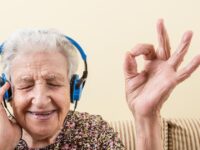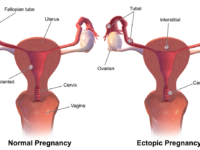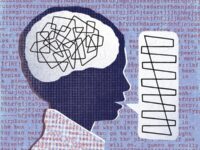Rhythm, melody, and harmony. Each genre of music has its unique combination of pitch, tempo, and texture. Each person’s taste in music is extremely subjective, evoking different emotions and feelings. With so many moving parts, however, it is amazing how a single song can have universal effects on people. Often dubbed the “Mozart Effect,” Mozart’s Sonata for Two Pianos in D Major (K448) seems to have positive effects on all listeners alike.
In addition to temporarily increasing IQ, listening to K448 is shown to demonstrate therapeutic benefits with its ability to decrease epileptic activity. Epilepsy is a disorder characterized by sudden seizures. These seizures start as bursts of electric impulses in the brain that spread to neighboring areas, creating a cascade of abnormal electrical impulses. There are many causes of epileptic seizures, the majority initiated within specific seizure onset zones. For most epileptic patients, seizures are preventable and controllable with medication. However, 20 to 40 percent of epileptic patients have refractory (uncontrolled) epilepsy where medications are not effective. Instead, patients with refractory epilepsy often undergo invasive procedures such as epilepsy surgery, vagus nerve stimulation, and deep brain stimulation. K448 music therapy is a possible non-invasive, non-pharmacological treatment that has promising results for refractory epileptic patients. In a paper published in September 2021, a group of researchers led by Robert Quon set out to identify the components of K448 that give it such special therapeutic qualities.
In Quon’s study, 16 people with refractory epilepsy were subject to Mozart’s K448 for various lengths of time. The participants were neurosurgical patients that had electrodes previously implanted in their brains, allowing researchers to identify epileptic activity in each region of the brain in real-time. The researchers focused on interictal epileptiform discharges (IEDs), which are biomarkers for seizures. To study IEDs, the subjects were separated into two groups: one with 15-second listening intervals, and the other 120-second intervals. The intervals cycled between K448, a filtered version of K448 with boosted gamma frequencies, violet noise as a negative control, and Wagner’s Lohengrin Prelude to Act One, another popular classical piece as a control for musical structure. These auditory stimuli were presented in random order, and each listening interval was followed by an interval of silence as a control.
Results showed that listening to K448 for short periods of time led to decreases in IEDs both in seizure onset zones and non-seizure onset zones alike. The effect was most strongly observed in the frontal regions of the brain, which are associated with working memory and emotional control. In line with that, the outcome was even stronger with longer listening periods; just 30 seconds of listening was required to elicit a significant IED decrease. Most interestingly, the results from K448 could not be replicated with any of the other auditory stimuli. In addition to those listed above, researchers also tested various classical pieces by Chopin and Liszt and songs from classical country, heavy metal, and rock and roll genres — all with no results.
By testing and comparing other genres, the researchers were able to pinpoint unique components of K448 that could lend to its therapeutic effects. In particular, they identified the musical structure of K448, including contrasting melodic themes with underlying harmonies. Based on the brain activation patterns observed, this musical structure may be responsible for causing positive emotional neural patterns in listeners and thus contributing to anti-epileptic effects. On the other hand, in Wagner’s Prelude to Act 1 of Lohengrin, another classical piece, the absence of contrasting melodies leads to an absence of anti-epileptic effects. Another component of K448 adding to its ability to decrease epileptic activity is its frequency and sound signature. When researchers tested the filtered K448 with boosted gamma frequencies, the anti-epileptic effects of the original K448 were not present, suggesting that there is a unique frequency contributing to therapeutic effects.
Musical structure may be responsible for causing positive emotional neural patterns in listeners and thus contributing to anti-epileptic effects.
By identifying specific components of K448 that set it apart from other classical, hip hop, and country music, Quon hopes to replicate K448’s anti-epileptic effects with other stimuli using algorithms to search for similar music or combining beneficial components to create new music. Perhaps future studies will find an optimal listening length to elicit long-lasting therapeutic results. The possibility of music as a non-invasive, non-pharmacological treatment for refractory epilepsy would strike a chord in the field of medicine and may open the door to other nonconventional treatments for epilepsy patients.
The possibility of music as a non-invasive, non-pharmacological treatment for refractory epilepsy would strike a chord in the field of medicine.
Source: Scientific Reports (2021). DOI: 10.1038/s41598-021-95922-7






